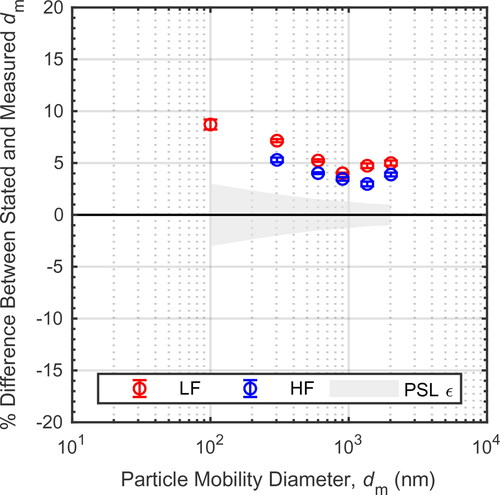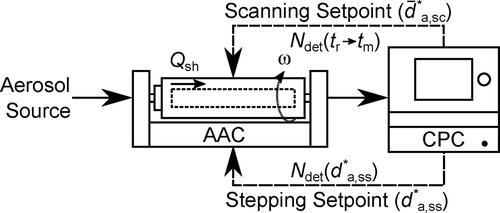Figures & data
Figure 1. Example of the transfer function () of the steady-state (ss) or scanning (sc) AAC based on limited trajectory theory (as summarized in ), where
is shown at 15 different times (in terms of
or
) over a 600 s scan from
rad/s to
rad/s, while
is only shown at the start and end speeds of the scan (i.e.,
and
respectively).
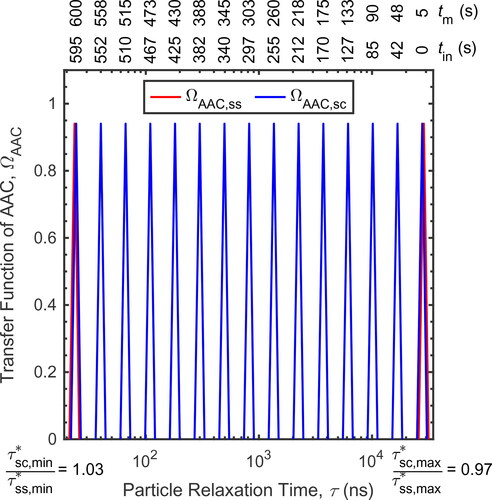
Figure 2. Example comparing the transfer function of the scanning AAC with balanced classifier flows based on limited trajectory or particle streamline theory.
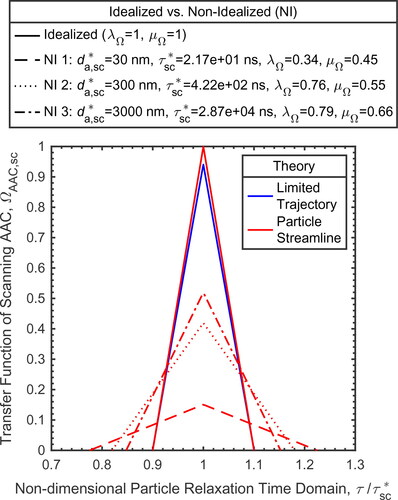
Figure 3. The average scanning AAC transfer function based on idealized limited trajectory or non-idealized particle streamline theory over three different particle detector counting times (
), where subplots (a), (b), and (c) show the transfer functions at the start of the up scan, end of the up scan and start of the down scan, respectively. The vertical line in each subplot, denoted with a black, dash-dot line style, shows the instantaneous setpoint of the scanning AAC (in terms of relaxation time,
or aerodynamic diameter3,
) at the start of the counting interval of the particle detector.
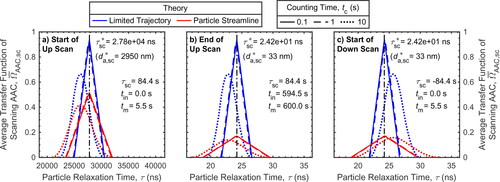
Table 1. Transfer function of the steady-state (ss) or scanning (sc) AAC based on limited trajectory (LT) theory.
Table 2. Transfer function of the scanning AAC based on particle streamline (PS) theory with balanced classifier flows or limited trajectory (LT) theory.
Figure 4. A comparison of the non-dimensional deconvolution parameter () of the transfer function of the scanning AAC, where subplot (a) compares the parameters based on idealized limited trajectory or particle streamline theory, while subplots (b) and (c) compare the idealized and non-idealized3 deconvolution parameters based on particle streamline theory at two sample flows (
or 1.5 L/min).

Table 3. Average transfer function of scanning AAC over counting time of the particle detector.
Table 4. Parameters of the scanning AAC.
Table 5. Parameters of the AAC during example scans.
Table 6. Deconvolution of the transfer function of the scanning AAC.
Figure 6. The experimental setup used to generate each of the four aerosols used to validate the inversion theory of the scanning AAC.
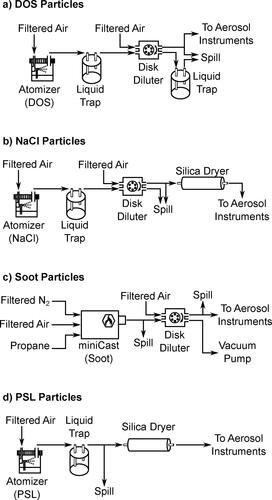
Figure 7. Comparison of particle size distributions from different aerosol sources measured by stepping or scanning the AAC, where (a) and (b) show the AAC measurements of the DOS particles at low and high classifier flows, respectively, while (c) and (d) show the AAC measurements at low classifier flows of the soot and salt particles, respectively.
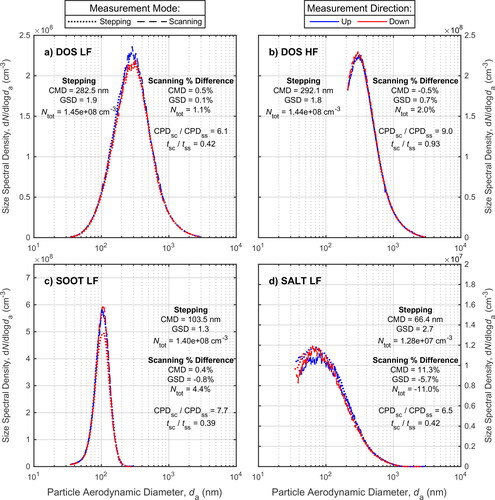
Figure 8. Agreement between PSL calibration particles and the mobility equivalent CMD of the size distribution measured by the scanning AAC. The error bars depict the repeatability of the measurements (assuming a 95% confidence interval), while the shaded region represents the uncertainty in the PSL sizes based on manufacturer specifications.
